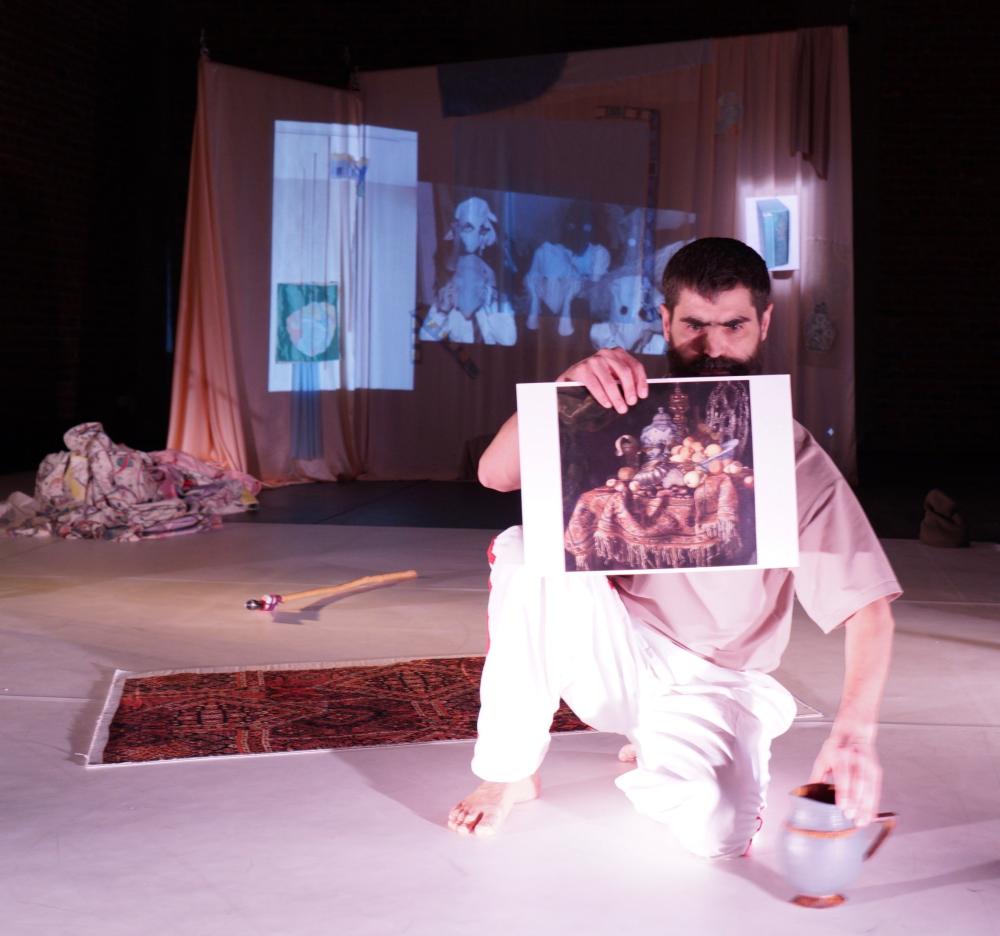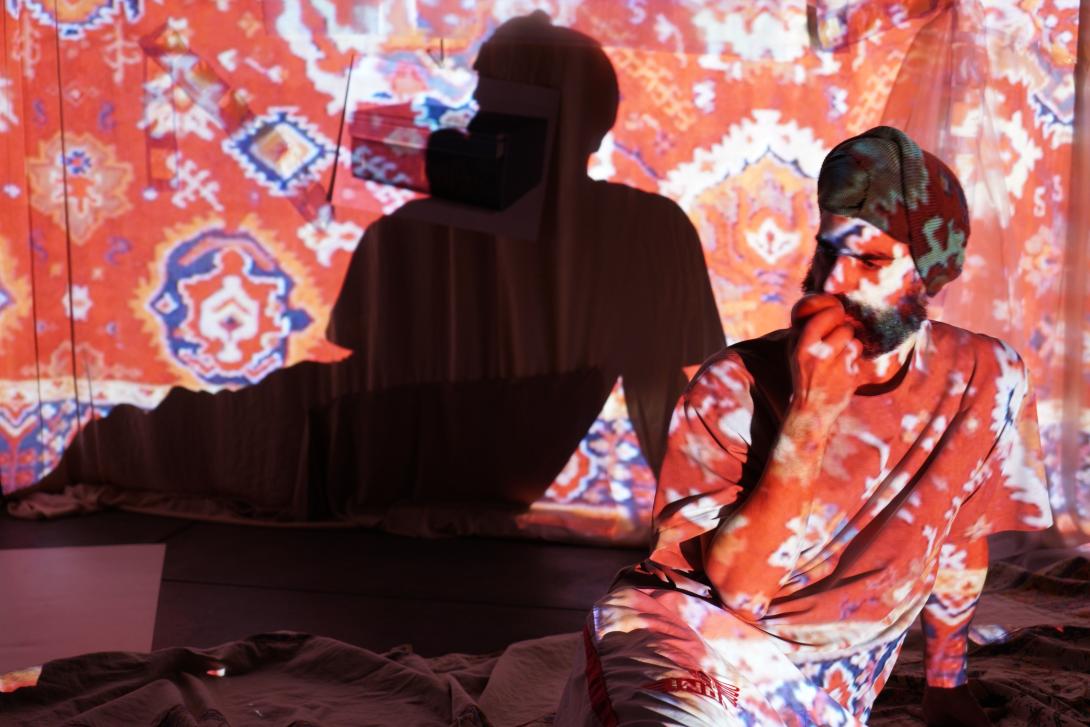“ART IS BY NATURE A SHAPE-SHIFTER”
A written interview with Marcos Simões
A written interview with Marcos Simões, by Eva Decaesstecker (Kaaitheater, March 2022)
What does the Art Spirit represent to you?
I see a Work of Art as a multitude of beings, textures, times, motifs, shapes and sounds. They are operating and communicating at the point of the creation of the work and gender its form turning the infinite into the finite (shape) and again back into the infinite through the viewer. An Art-Work is plural, a constant passage from one thing to another.
Art is by nature a shape-shifter, changing with time, with every artist, and even with every viewer as the same piece can be perceived in many ways. This gives Art a sort of unexplainable and undefined quality, or Spirit if you like.
During the process of How not to be understood? I was interested in how I could grasp this Spirit by creating an Art-related collection, composed mainly of images, texts, and videos. This collection grew during the process of this project through a very personal system of choice, ruled by attraction and interest. How does the collection affect, direct, collaborate, and influence the making of the work? How can this Spirit become a sort of invisible dramaturg? For me, Art helps to 'shape' and perceive the world we live in.
You see How not to be understood? as a love relation with art. How would you describe this relationship?
I like to think of the artist as a medium. A medium in between a world and the audience, the here and the out-there. The scenes are attempts to communicate with Spirits. I was inspired by communication strategies to invoke invisible presences, and I've created the scenes as a way to approach movement, objects and a presence on stage. This gives an otherworldly quality to the performance, connecting the actions and dances to a sort of ritualistic, subconscious and unconscious experience of the world.
This relationship between myself and art in this performance is translated into a multi-layered web of materials and meanings that evokes something (or a sum of things) to be perceived through the senses – the language of the sensual – and not to be understood. I'm interested in a dance performance that works through poetics, through the relationship between the different materials that composes the work, in a non-linear way. The collection of materials is intricately interwoven to generate sensations of a presence of here and out-there, bringing the invisible visible to an audience through relationships that are echoing and mirroring. A game of apparitions made of shapes, bodies, gestures, and sounds created by ways of communicating to this Art Sprit.
For me, How not to be understood? is like Love: a passage into the other. A process of alterity, of deterritorialization, an out-of-body experience into the multiplicity of the other, an excess of intensities. I'm interested in Love as a necessary force of madness to shift, to revolve, to re-configure and disfigure fixed figures. Love as the space where a transformation can occur and produce something other, create other bodies, other worlds. Love as a creative force of infinite possible relations and becomings. Love as poetry. Art as Love. That is why How not to be understood? is a love relation with Art. How Art transforms and continues to reshape me and vice-versa.
In your work, the body as medium is always accompanied by other media. For this performance it is video, and fabric. Which roles does each material have?
Video has always been part of my performances. In How not to be understood?, video is used as strategy to present my 'art collection', to assemble it, to bring it in motion and as a way to relate the disparate elements that constitutes this collection.
By choosing those images and compilating these videos myself, I've watched the images over and over again. This collection converted into videos functioned as a back mind presence, in the same way as publicity strategies do, playing tricks with our mind in the moment of consummative decision. It played with my aesthetics decisions. This influencing back and forth between the collection and the performance creates a network of relations between the dances, the objects and the images.
A piece of cloth has always been — at least in occidental representation – a way to make the contour of a ghost visible. In this piece, the cloth functions as a mediatory device to invoke the Sprit. It’s an object of transference, but also something that facilitates the projection of the video. By playing with different distances between the cloth and the body, I build up a personal relation that reflects on the relation of the artist and art making, on art as a 'surface' of projection, and on art in general.
It is interesting for me to see how one element can have several functions, thus reenforcing the idea of how something can become several other things. The cloth shifts between the object and the subject, the concrete, figurative and the abstract, between sign, symbol and language, but it also a mere scenographic element. There are few other objects present in the piece. I have kept them as much as possible to a minimum to give importance to the body, the cloth and the videos. The other objects only appear to reenforce the web of connections between the videos and the performative space.
This is your first solo piece! How was it to make a solo piece instead of a collaboration? Did you have to develop new working strategies?
This might be my first solo piece but I am not sure about this affirmation because, not to mention all the people involved in this project that are part of the making of this work, I was also collaborating with an invisible dramaturg :). I like to say that How not to be understood? is a solo that is not a solo, or a solo yet to be.
It is not the first time that I'm 'porteur du projet.' This is clearly something other than a collaboration, as the latter is always a shared space of ideas, decisions and aesthetics – which I really enjoy because it always questions modes of functioning. When you make a solo piece, you're more by your own with all the doubts and reflections that the process brings along.
I don't know if the methodology of making was much different form my past works, because I suppose each new project is a mix of old and new strategies. In addition to the time that I and the other people involved worked alone, I've very much enjoyed the 'mise en place' of a sort of atelier, where we worked together in the same space, each one on their own and then gathered from time to time in a very organic way to share questions, processes and propositions. It felt like a very comfortable way to share space and time.

